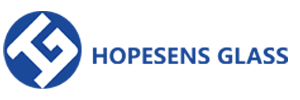Borosilicate glass is a type of glass material with a higher boron content, represented by different products from various manufacturers. Among them, Schott Glass's Borofloat33® is a well-known high-borate silica glass, with approximately 80% silicon dioxide and 13% boron oxide. Besides Schott's Borofloat33®, there are other boron-containing glass materials in the market, such as Corning's Pyrex (7740), Eagle series, Duran®, AF32, etc.
Based on the different metal oxides, high-borate silica glass can be divided into two categories: alkali-containing high-borate silica (e.g., Pyrex, Borofloat33®, Supremax®, Duran®) and alkali-free high-borate silica (including Eagle series, AF32). According to the different coefficients of thermal expansion, alkali-containing high-borate silica glass can be further categorized into three types: 2.6, 3.3, and 4.0. Among them, the glass with a thermal expansion coefficient of 2.6 has a lower coefficient and better temperature resistance, making it suitable as a partial substitute for borosilicate glass. On the other hand, the glass with a thermal expansion coefficient of 4.0 is mainly used for fire-resistant applications and has good fire-resistant properties after toughening. The most commonly used type is the one with a thermal expansion coefficient of 3.3.
| Parameter | 3.3 Borosilicate Glass | Soda Lime Glass |
| Silicon Content | 80% or more | 70% |
| Strain Point | 520 ℃ | 280 ℃ |
| Annealing Point | 560 ℃ | 500 ℃ |
| Softening Point | 820 ℃ | 580 ℃ |
| Refractive Index | 1.47 | 1.5 |
| Transparency (2mm) | 92% | 90% |
| Elastic Modulus | 76 KNmm^-2 | 72 KNmm^-2 |
| Stress-Optical Coefficient | 2.99*10^-7 cm^2/kgf | 2.44*10^-7 cm^2/kgf |
| Processing Temperature (104dpas) | 1220 ℃ | 680 ℃ |
| Linear Expansion Coefficient (20-300 ℃) | (3.3-3.5) ×10^-6 K^-1 | (7.6~9.0) ×10^-6 K^-1 |
| Density (20 ℃) | 2.23 g•cm^-3 | 2.51 g•cm^-3 |
| Thermal Conductivity | 1.256 W/(m•K) | 0.963 W/(m•K) |
| Water Resistance (ISO 719) | Grade 1 | Grade 2 |
| Acid Resistance (ISO 195) | Grade 1 | Grade 2 |
| Alkali Resistance (ISO 695) | Grade 2 | Grade 2 |
In summary, compared to soda lime glass, boroslicate glass has better thermal stability, chemical stability, light transmittance, and electrical properties. As a result, it possesses advantages such as resistance to chemical erosion, thermal shock, excellent mechanical performance, high operating temperatures, and high hardness. Therefore, it is also known as heat-resistant glass, heat-resistant shock glass, high-temperature-resistant glass, and is commonly used as a special fire-resistant glass. It is widely applied in industries such as solar energy, chemical, pharmaceutical packaging, optoelectronics, and decorative arts.
